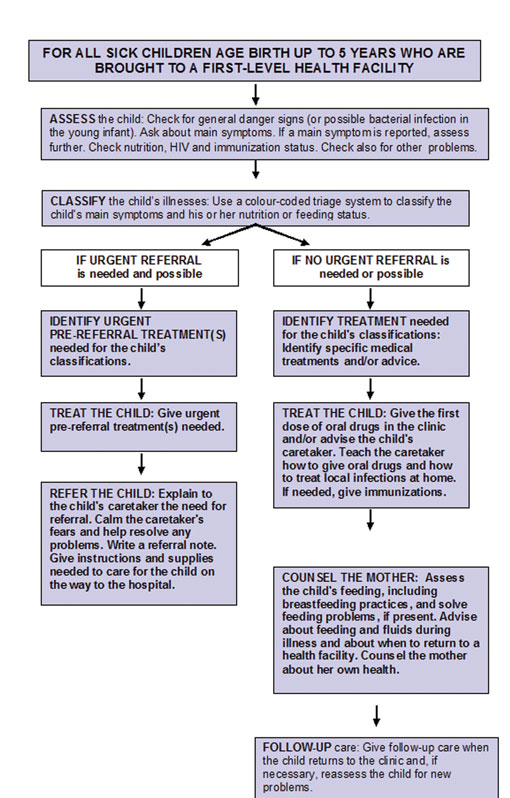15.1 Integrated case management process
The IMNCI guidelines are based on the following principles:
- All sick children must be checked for ‘general danger signs’ which indicate the need for immediate referral or admission to a higher health facility level.
- All sick children must be routinely assessed for major symptoms: cough, fever, diarrhoea, ear problems.
- Children should also be assessed for nutritional and immunization status, feeding problems and other problems.
You learned about all of these key principles in the earlier study sessions in this Module. We are now going to describe how to bring your learning together so you can treat the sick child in a holistic way.
Triage is pronounced ‘tree-ahj’.
Figure 15.1 summarises the integrated case management process in the form of a flow diagram. Take a few moments to look at this now. After assessing for general danger signs, other symptoms and problems, the next step is to use the colour coded triage system (identifying the appropriate treatment according to the priority or severity of the symptoms). This guides how you classify the child’s main symptoms, feeding status and nutrition. You can see from Figure 15.1 that the classification will be either ‘urgent referral is needed and possible’ or ‘no urgent referral needed or possible’.
As well as understanding the case management process, it is important that you know how to select the correct chart for managing the sick child.
Learning Outcomes for Study Session 15

